European school of the late 19th century. Mythological scene taken from the Iliad, depicting Ulysses bringing the young Chryseis back to her father Chryses, priest of Apollo.
The subject is depicted in an idealized classical port, bathed in a golden light typical of the pictorial universe of Claude Gellée, known as Le Lorrain.
The maritime background, the ancient architecture, the departing frigates, and the figures arranged in a frieze are characteristic of the Lorraine master.
This painting, done in oil on wood panel, combines ancient grandeur and luminous poetry.
Claude Gellée, known as Le Lorrain (1600–1682) was a painter and draftsman from Lorraine, active mainly in Rome. Claude Gellée is considered one of the greatest masters of classical landscape painting. He is famous for his luminous compositions where nature dominates history, mixing ancient elements, golden skies, deep perspectives and mythological or biblical figures, often secondary. His works are not real views, but ideal landscapes, which evoke a dreamed Antiquity. His talent lies in the treatment of atmospheric light, notably dawns and sunsets, which he renders with a poetic gentleness characteristic of his work. He profoundly influenced all European landscape painting until the 19th century (Turner, Corot, etc.).


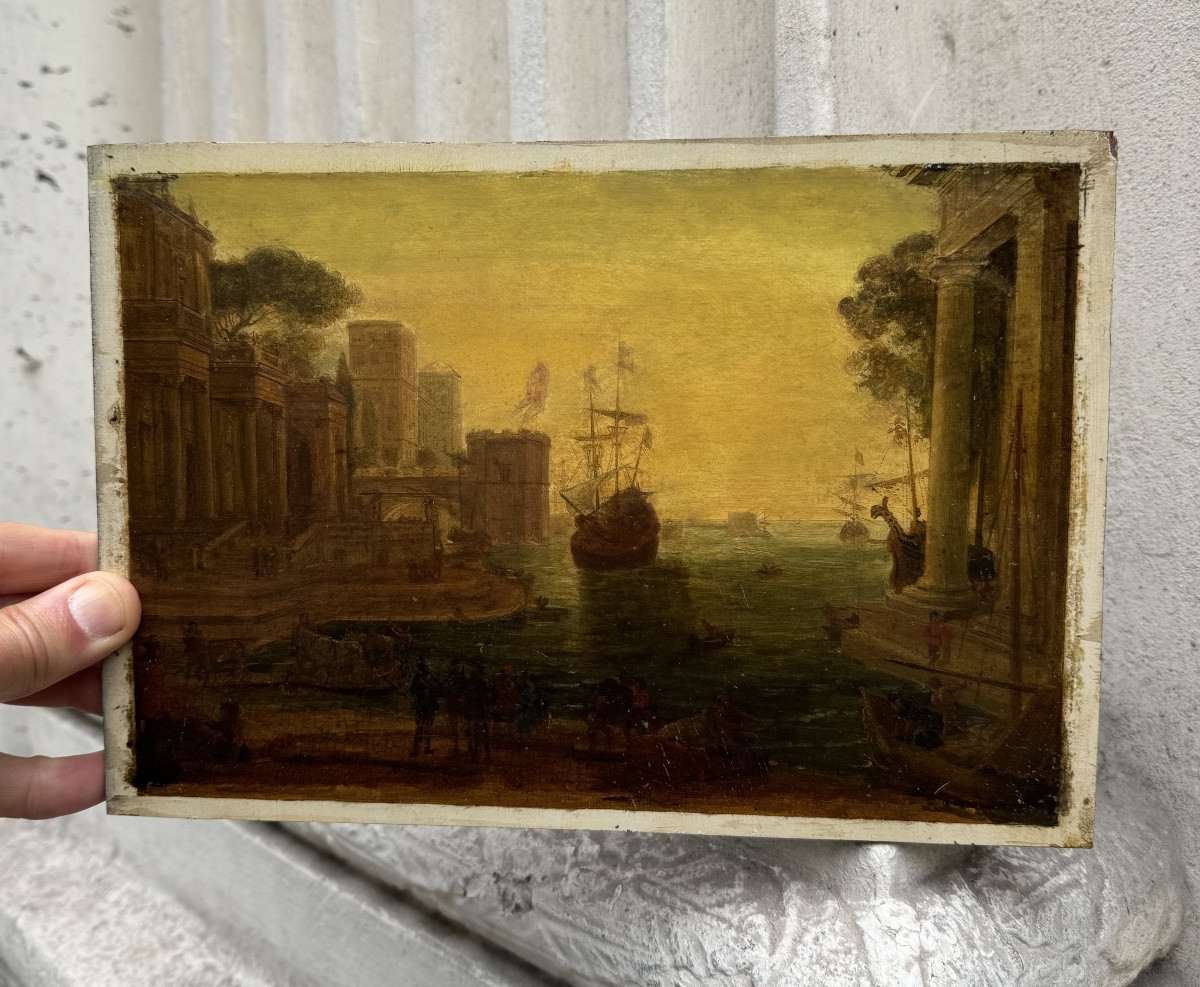


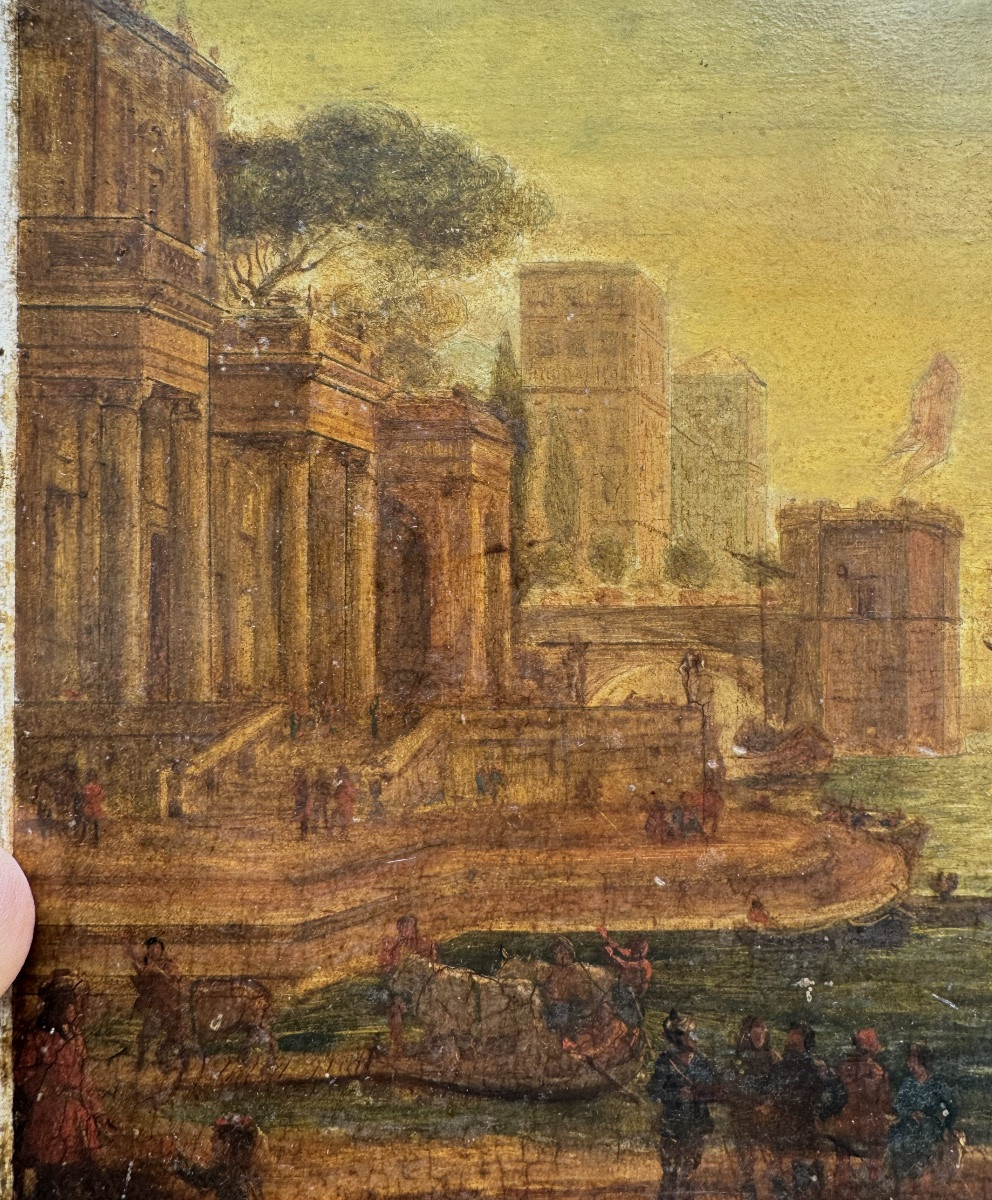
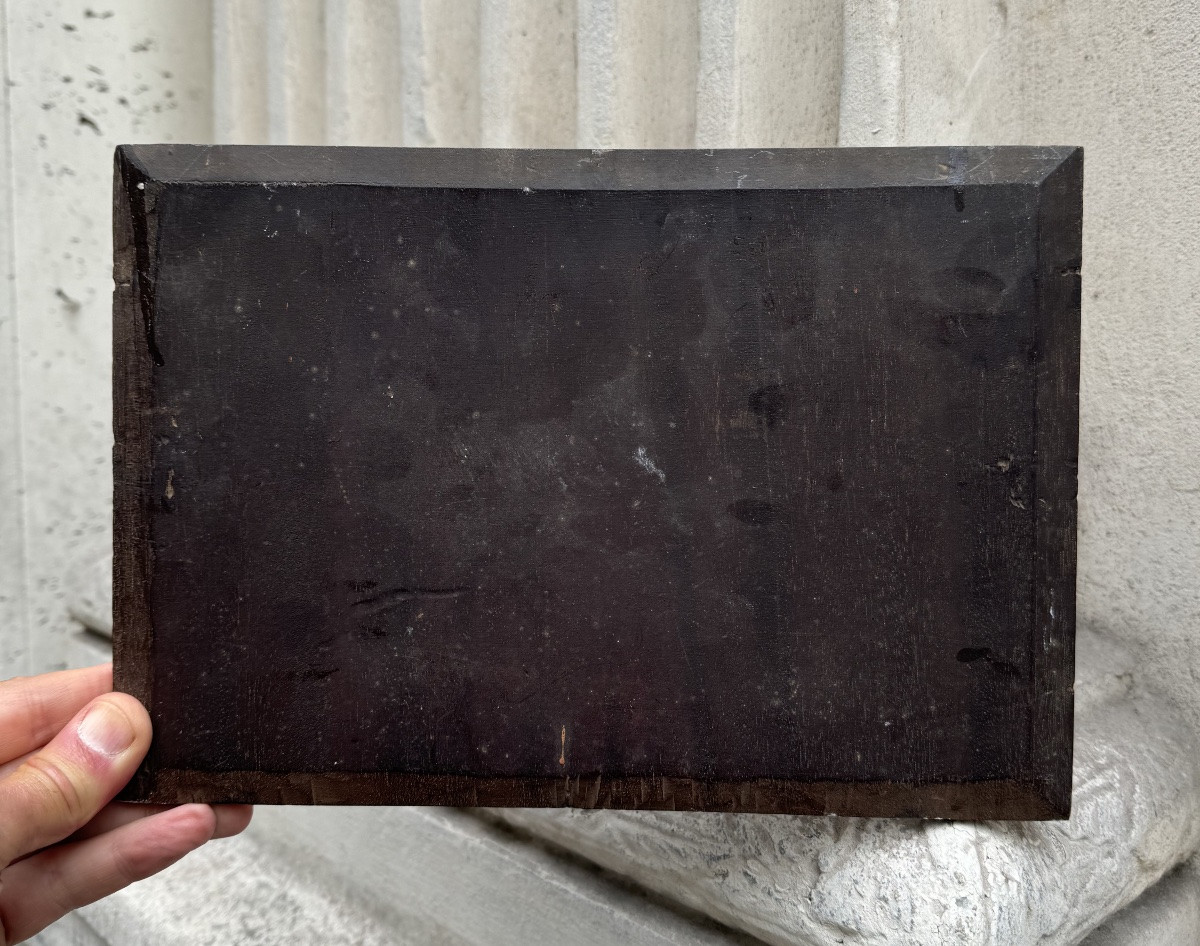












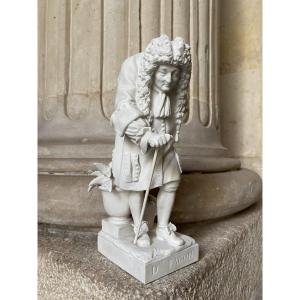
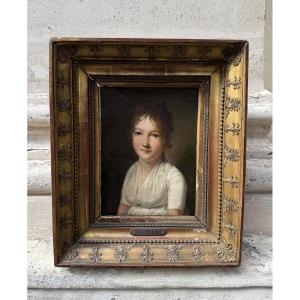

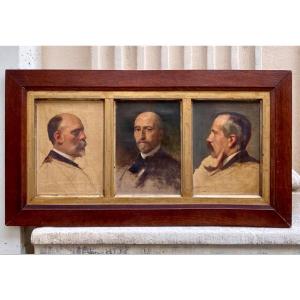
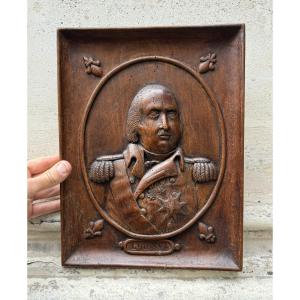
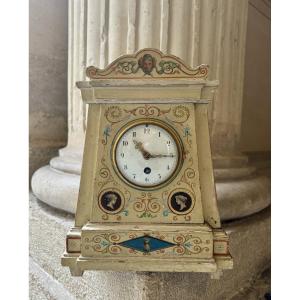





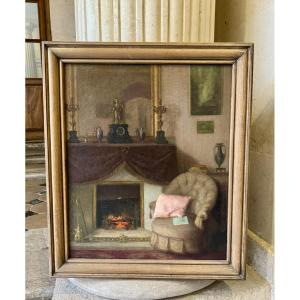

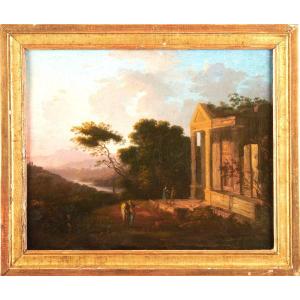

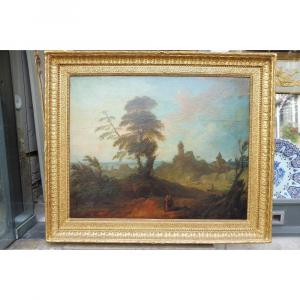

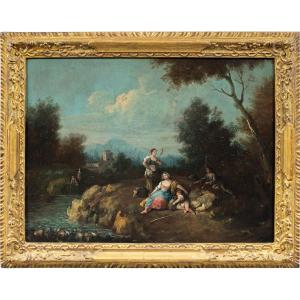



 Le Magazine de PROANTIC
Le Magazine de PROANTIC TRÉSORS Magazine
TRÉSORS Magazine Rivista Artiquariato
Rivista Artiquariato